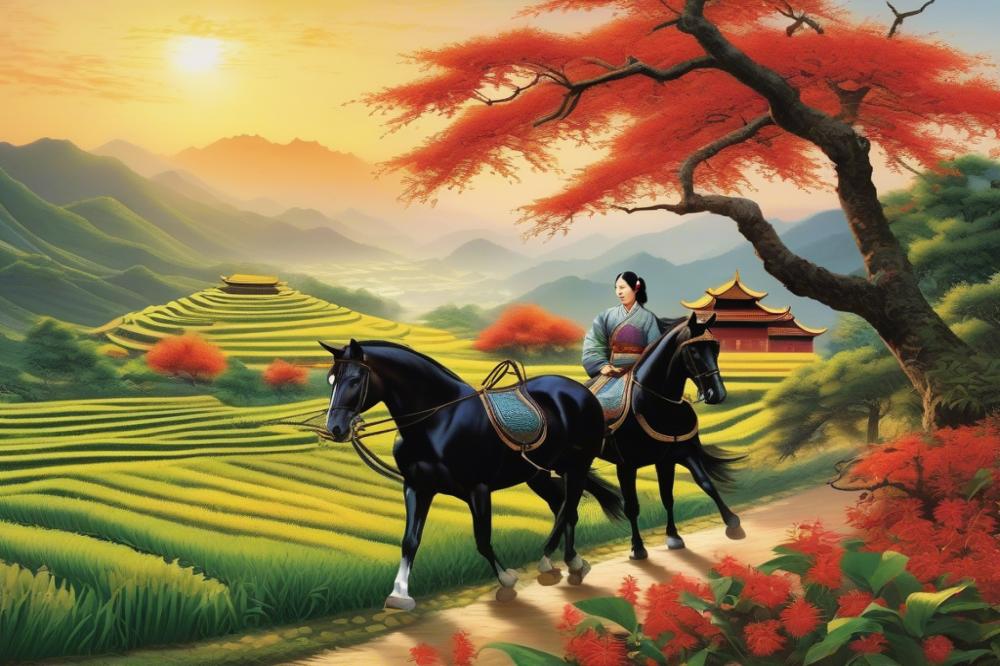Introduction
Throughout history, Horses have held a significant place in various cultures around the world. They have served as companions, workers, and symbols of strength. In many societies, these animals have been crucial for transportation and warfare. Yet, their role extends far beyond these realms. agriculture, for instance, has greatly benefited from their presence.
In Early China, the influence of these animals on Agricultural Practices cannot be overstated. They transformed farming techniques and boosted productivity. With their ability to pull plows and transport goods, they made it easier for farmers to cultivate land and increase yields. This change allowed communities to grow and thrive in ways that were not possible before.
The relationship between agriculture and Horses significantly impacted trade and economic growth. As farming improved, so did the ability to transport surplus crops. This led to trade opportunities among different regions. Farmers could sell their extra produce, exchanging goods and ideas. Such interactions helped develop networks that were vital for the economy during that time. The interdependence between agriculture and the use of horses laid the groundwork for stability and growth in early Chinese civilization.
Horses in Early China
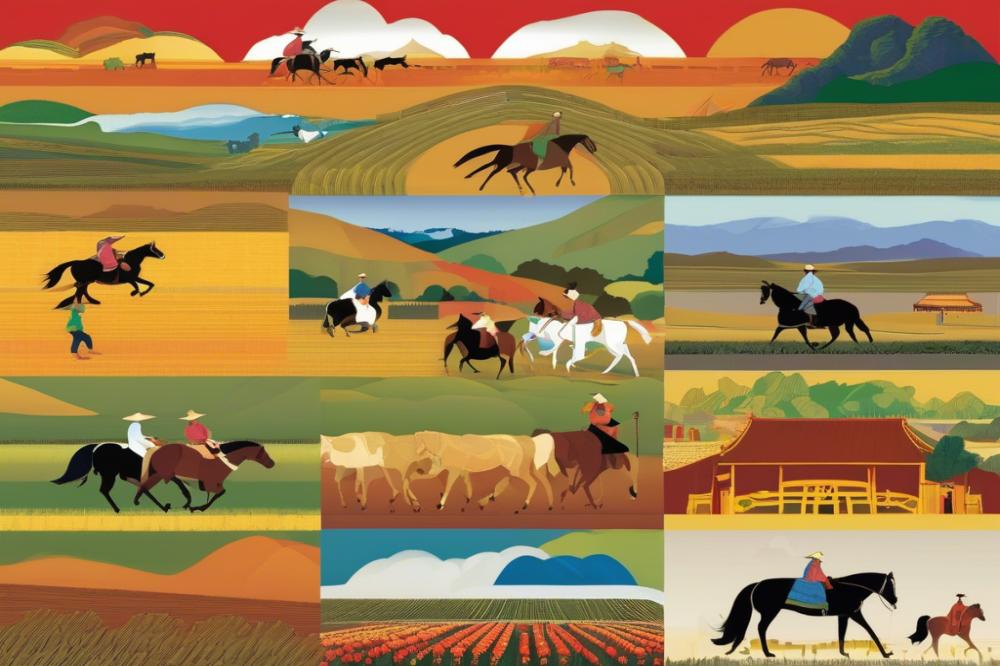
Historical background of horse domestication in China
Domestication began around 2000 BCE. Early Chinese societies recognized the value of these animals. Evidence suggests that horses were first bred in the northern regions. They quickly became essential for transportation and trade. As communities expanded, so did the need for effective movement. This resulted in new agricultural techniques and practices.
Types of horses and their characteristics
Various breeds emerged throughout the ages. The Mongolian horse is among the most well-known. These animals are sturdy and can withstand harsh conditions. Other types included the Han horse, prized for its speed. Traits like endurance and strength were crucial for work on farms. Each breed served different purposes in daily life.
The role of horses in early Chinese civilization
Utilization of these animals transformed early agriculture. They assisted in plowing fields and transporting goods. With animals helping, people could expand their farms. This led to increased food production. In addition, horses played a key role in warfare. Cavalry units became integral to military strategies. Cultures began to develop around equestrian activities as well. Ceremonies often included horses, showing their importance to society. Trade routes also flourished with these beasts of burden. Their influence reached beyond just farms and fields.
The Impact of Horses on Agriculture
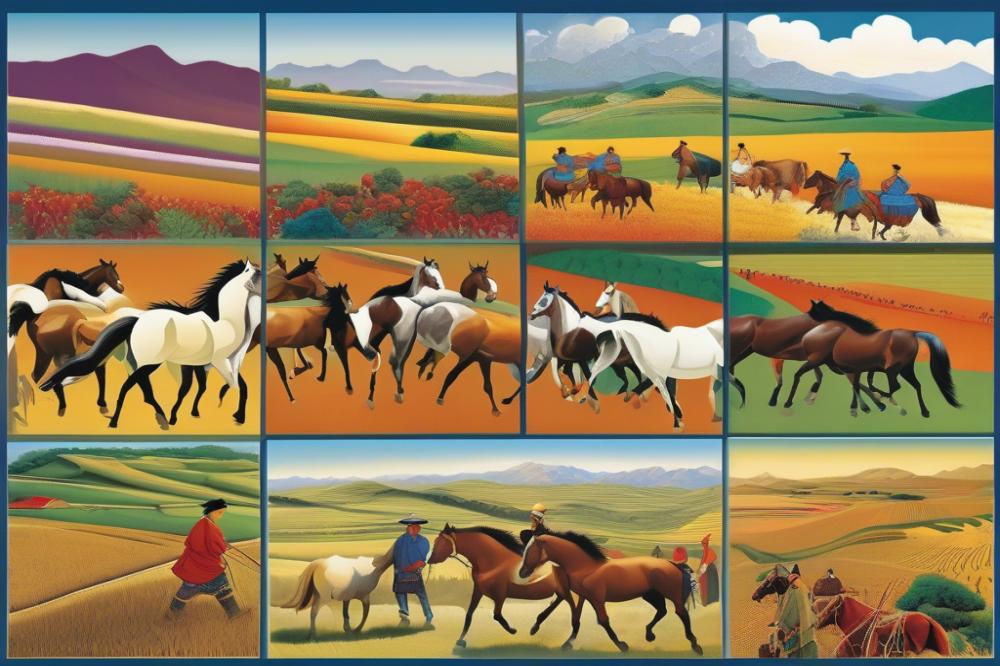
The introduction of horses transformed farming practices in early China. Before their arrival, farmers relied heavily on human labor and oxen for plowing fields. This method was slow and often exhausting. When horses were used to pull plows, the difference in efficiency was significant.
A horse-drawn plow allowed farmers to cultivate land much faster than traditional methods. The strength of these animals meant that larger areas could be worked in a shorter time. In comparison, oxen were slower and required more time to prepare fields. Using horses also opened up the possibility for deeper plowing, which improved soil aeration.
Many benefits arose from incorporating these animals into Agricultural Practices. Soil cultivation improved greatly, leading to enhanced crop yields. Farmers noticed they could sow seeds more effectively as well. This change resulted in a higher amount of food produced, which supported larger populations. It did not just increase efficiency; it also allowed for the possibility of surplus production.
Transportation and Trade Enhancements
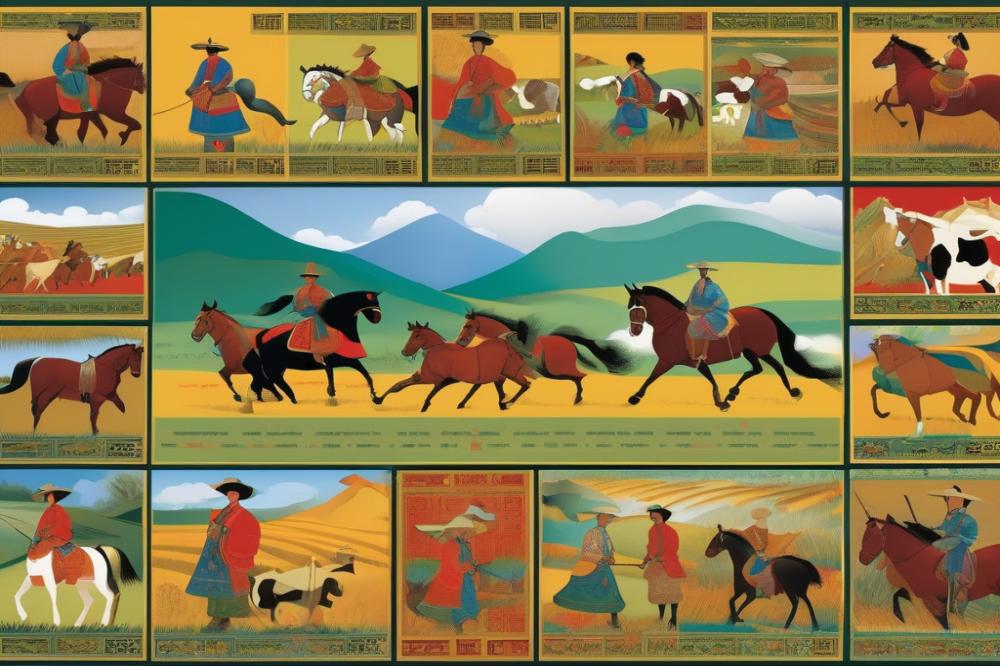
Horses revolutionized transportation networks in early China. They enabled faster movement across great distances. Long journeys that once took weeks could now be completed in days. Roads improved as people began to travel and trade more often. Supply routes expanded, connecting villages and cities like never before.
These animals played a significant role in commerce. Merchants relied on them to transport goods such as silk, spices, and grains. Trade flourished as regional markets grew more accessible. The ability to move products quickly meant that sellers could reach new customers. Distant towns received items they could not produce themselves.
Improved transportation had a direct effect on agricultural distribution. Farmers could now sell their surplus crops beyond their local markets. A network of roads allowed produce to reach urban areas where demand was high. This increased availability helped stabilize food supply across the region. People benefited from a diverse range of goods as a result of these developments.
Horses and Economic Development
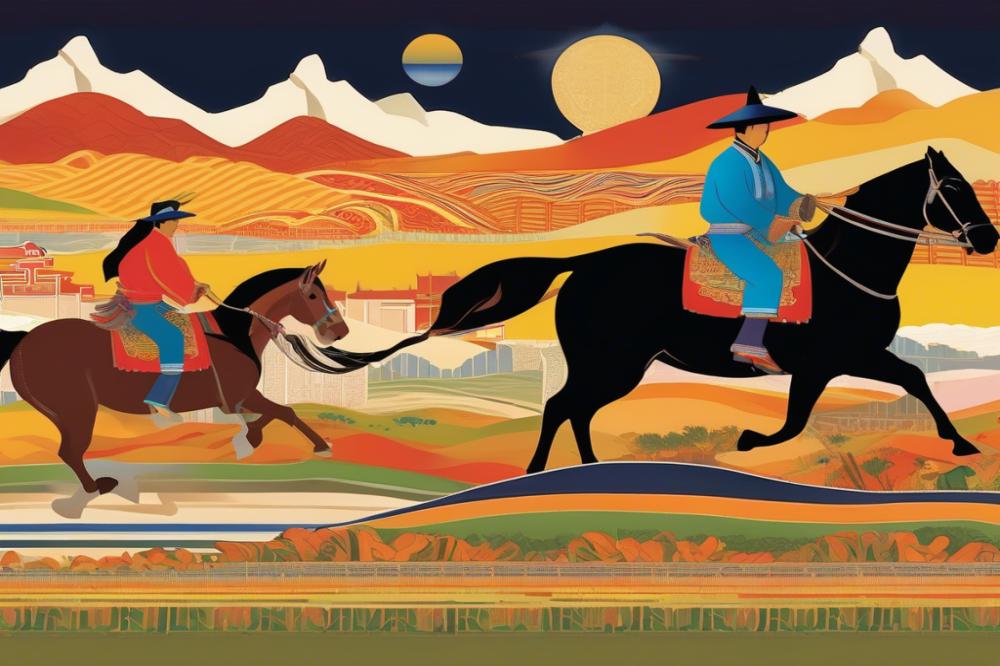
The presence of horses played a key role in the economic growth of early Chinese society. These animals were not merely companions; they became vital to trade and agriculture. Their speed allowed for quicker movement of goods across long distances. Merchants could transport items faster, opening up new markets and expanding commerce.
Alongside riding and transport, animal husbandry began to flourish. Farmers recognized the value of raising not just horses but also other livestock. This led to a diversification in agriculture. As the population expanded, more livestock meant more opportunities for food production. The rise of these practices meant that rural areas began to thrive economically.
Changes in transportation had a ripple effect on city growth. Urban economies benefited. Cities saw an influx of goods from the countryside, feeding their expanding populations. Markets began to develop, creating jobs and social exchanges. Rural areas also experienced transformation as they became crucial suppliers for urban centers.
Trade routes further developed due to this increasing economic activity. Travelers and merchants sought out better ways to move their products. Over time, a complex network of trade emerged. This interconnectedness helped unite various regions, fostering a greater sense of community and shared economic interest.
Interaction between rural and urban areas laid the groundwork for a more structured economy. The demand for horses led to specialized breeding efforts. Breeders focused on certain traits to meet increasing needs. This specialization allowed certain regions to become known for high-quality animals. Their importance in agriculture and trade continued to grow, reinforcing their economic impact.
Technological Advances Driven by Horses
The introduction of equines revolutionized agriculture in early China. Farmers began to create more efficient tools to take advantage of this new power source. For instance, plows were modified to be pulled by animals, which increased their effectiveness. Traditional methods often relied on human strength alone, but this shift allowed for deeper and more thorough soil preparation.
With the use of animals for labor, innovative ideas emerged. The seed drill became a popular invention, making planting seeds faster and more uniform. This meant that crops could grow more consistently, helping communities to thrive. Alongside these tools, farmers learned to rotate crops, which improved soil health over time.
Power from horses led to the development of larger and more complex machinery as well. As farming methods evolved, so did the need for better transportation of goods. This need inspired advancements in carts and wagons, allowing for easier movement of produce from farms to markets. A wider network of trade routes grew, connecting various regions and boosting economic activity.
Additionally, the bond between humans and equines fostered a spirit of innovation. Farmers became more adventurous in trying new approaches. Techniques such as fertilization and irrigation improved as people observed how animals responded to different agricultural practices. The interconnectedness of technology and daily life became clearer.
Overall, the influence of these animals on agricultural technology was profound. By encouraging efficiency and promoting creativity, they played a vital role in shaping the future of farming in ancient China. Each new tool and methodology built upon the last, guiding the way toward modern agricultural practices.
Final Thoughts
The role of horses in shaping agriculture in Early China goes beyond mere utility. These animals revolutionized how farming was conducted. With greater strength and speed, they made transportation of goods more efficient. This allowed farmers to access markets that were previously out of reach. Crops could be sold far from their origins, which helped communities grow economically.
In addition to enhancing trade, they also played a vital role in the cultivation of land. The ability to plow larger fields translated into increased production. More food meant healthier communities and more stable societies. This transformation fostered the rise of complex civilizations, with agriculture at the core.
The impact does not end with ancient times. The bond between humans and these creatures echoes through history. Many farming techniques and practices adopted during that era still influence modern methods. People today continue to witness the significance of these animals in enhancing agricultural output around the world.
Thinking about broader implications highlights the importance of horses in various cultures. They have been crucial in advancing societies across continents. In places like Europe and Asia, their contributions helped shape economies and social structures.
As we look back, it is clear that their influence on Early China was profound. The relationship established between people and animals laid the groundwork for continuous development in agriculture and beyond. This legacy remains, reminding us of the essential roles that animals play in human progress.

